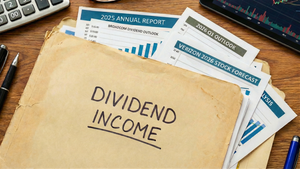SOURCE: Workiva
DESCRIPTION:
By Steve Soter
Like a freight train, ESG reporting is converging very quickly with what financial reporting teams do today.
That’s the view of Neil Stewart, Director of Corporate Outreach of the Value Reporting Foundation, which is bringing businesses’ and investors’ needs together as it advances the development of environmental, social, and governance disclosure standards. (You might remember, the foundation was born when the Sustainability Accounting Standards Board, or SASB, and the International Integrated Reporting Council merged in June.)
Neil spoke this month to the SEC Professionals Group’s ESG Reporting Committee about SASB Standards for ESG disclosures, integrated reporting, and changes ahead in the regulatory landscape.
“It is developing far more quickly than I think anyone could have predicted,” Neil said of the landscape, as the U.S. Securities and Exchange Commission, European Commission, IFRS Foundation, and others explore where regulations should go next.
A hint of what’s ahead
While many of us may want a single standard for corporate reporting to emerge, the different audiences and differences in what is measured for financial reports versus sustainability reports could make that impossible, Neil said.
"There will still be layers or building blocks of reporting approaches for different audiences,” Neil said. “As the IFRS Foundation and the SEC look at creating standards for reporting, we expect them to follow that building block approach and to stick to their sweet spot, which is disclosure about enterprise value for providers of capital as the users of the information.” The next building block, which could be applied by different jurisdictions depending on their sustainable development goals: reporting on environmental, social, or governance impacts that may not yet pose financial risks or affect the bottom line.
The building block idea promotes a layered approach to reporting. The first building block or layer could address investor-focused demands for disclosure of information that’s financially material to the business, Neil said. The next layer could address concerns of other stakeholders, including employees, customers, or society at large. This sequence expands financial reporting beyond environmental, social, or governance impacts that affect the bottom line or pose current financial risks.
By the way, SASB, the International Organization of Securities Commissions (IOSCO), and the IFRS Foundation, have all given the “building blocks” idea a look, as noted in response to the SEC’s call for comment on the commission’s forthcoming climate disclosure proposal.
The Value Reporting Foundation has urged the SEC to require qualitative disclosures around governance and strategy, for example, but also quantitative disclosures, some of which would apply to all public companies and some of which are industry-specific. After all, SASB has long held that ESG reporting isn’t “one size does fits all.”
Where to start with ESG reporting
As you build your own ESG reporting process, the Value Reporting Foundation has resources that can help:
- Downloadable SASB Standards
- SASB Materiality Map, an interactive tool you can use to identify potential disclosure areas specific to your industry and sector
- Integrated Reporting Framework (even if you don’t use the framework, integrated reporting can still be valuable to in showing stakeholders the connections between ESG performance, financial performance, social impacts, environmental impacts, your risk strategy, and oversight)
In the beginning, you may not have a full-blown sustainability report with data and narrative. Maybe you start with a table of key metrics and go from there.
Using multiple ESG frameworks
It’s common for companies to follow multiple frameworks, including the Global Reporting Initiative (GRI) framework, which is used by thousands of ESG reporting entities. However, use of SASB Standards and the recommendations of the Task Force on Climate-Related Financial Disclosures (TCFD) is growing quickly, according to Datamaran, as reported by The Economist.
Financial giants including State Street and Norges Bank Investment Management support or report in accordance with both SASB and GRI, for example. At Workiva, we’re preparing our reporting in accordance with GRI and SASB standards and in alignment with TCFD and the United Nations Sustainable Development Goals (SDGs).
Final thoughts
As your ESG reporting and regulations evolve, the SEC Professionals Group is a place for all finance professionals—even if you’re at a private company or in the public sector—to share ideas, network, and talk about upcoming mandates.
We’d love to have your voice in the group and on the ESG Reporting Committee. You can apply to join the group here.
KEYWORDS: Workiva, NYSE: WK, Sustainability Accounting Standards Board, nternational Organization of Securities Commissions







